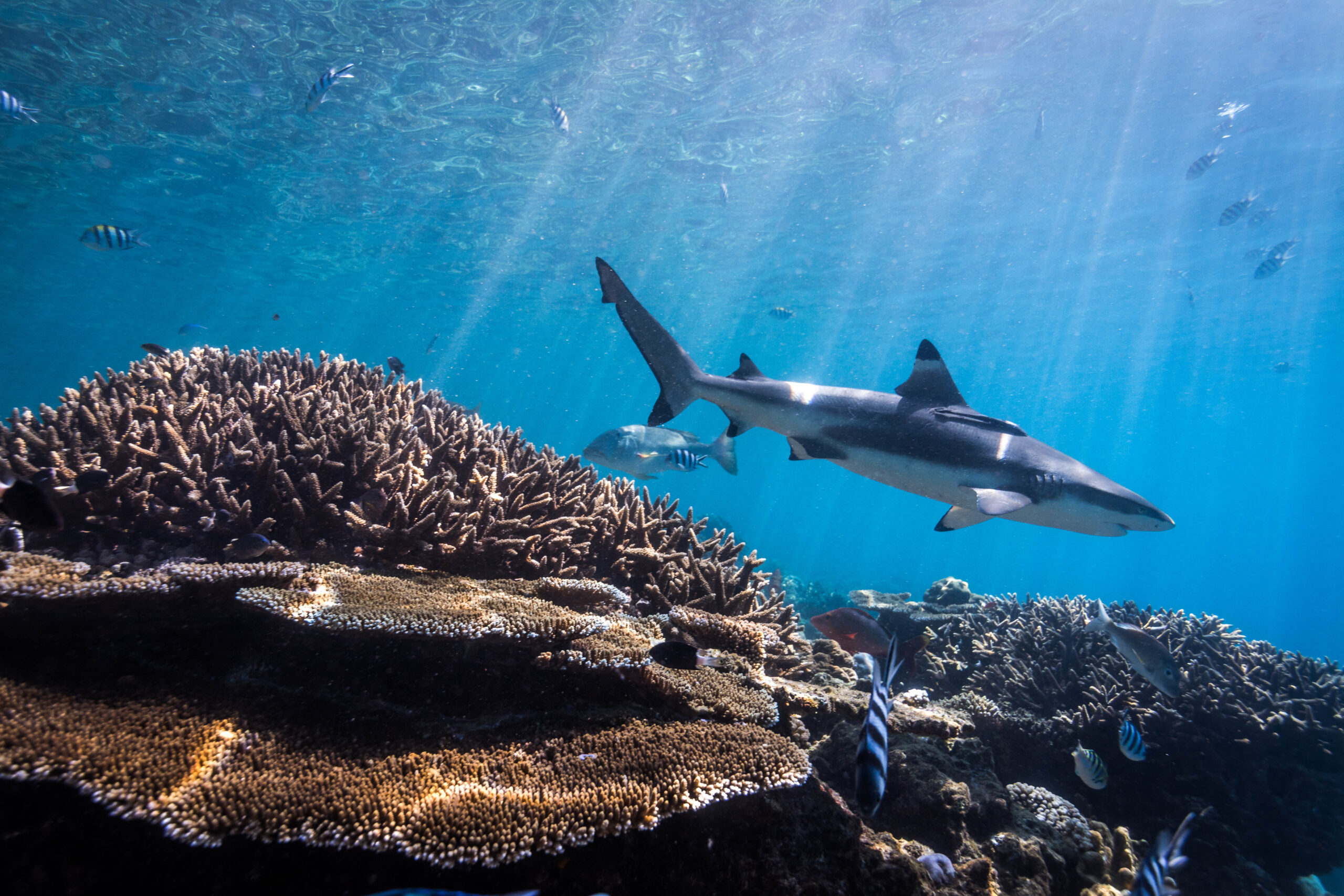Mumby and others examine the critical question, “How does predation impact herbivorous fish populations and subsequent grazing intensity within non-fished marine reserves?” Using the Exuma Cays Land and Sea Park, with a fishing ban enforced since 1986, the authors quantified the impacts of no-take marine reserves on Montastraea reefs at a variety of spatial scales. The authors found that there was significant variation in community structure of parrotfishes between the reserve and non-reserve reefs. In short, smaller (bodied) species parrotfish were smaller in the reserve but there was no change in abundance, while larger-bodied species parrotfish did not exhibit size differences but were nearly double within the reserve. Larger bodied parrotfish appeared to escape predation and contributed significantly to increasing grazing intensity, reducing macroalgal cover within the reserve. This work has implications for managing no-take reserves and documents the benefits of required enforcement, despite contrary theoretical arguments.
Author: Mumby, P.J., C.P. Dahlgren, A.R. Harborne, C.V. Kappel, F. Micheli, D.R. Brumbaugh, K.E. Holmes, J.M. Mendes, K. Broad, J.N. Sanchirico, K. Buch, S. Box, R.W. Stoffle, and A.B. Gill
Year: 2006
View Full Article
Science 311(5757): 98-101. doi:10.1126/science.1121129


